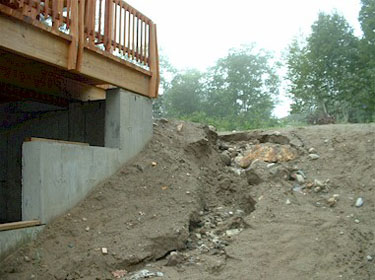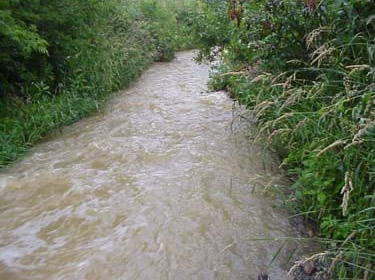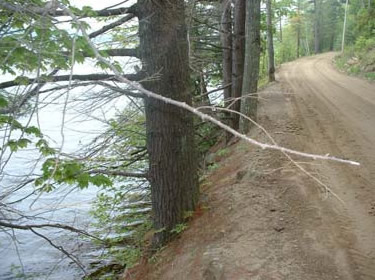Home → Land Resources → Erosion & Sedimentation Control
Erosion & Sedimentation Control
Did you know that the number one pollutant in Maine's rivers, streams, brooks, ponds and wetlands is soil from nearby eroding sites?
What is it and why is it important?
Whenever mineral soil is exposed, loss or movement of that soil is possible from the actions of rain, snowmelt or wind. All land is located in a watershed with most runoff reaching a stream, river, lake or coastal water. Eroded soils and other pollutants can be transported and deposited into these resources resulting in damage to fish habitat in streams and movement of pollutants, such as phosphorus, to lakes.
DEP uses the Erosion and Sedimentation Control Law to support education efforts concerning the importance of erosion control and promote the use of best management practices (BMPs) in watersheds, both within and beyond immediate shoreland areas.
Training Available
The Nonpoint Source Training Center provides training to become certified by the Department in understanding and implementing effective erosion control. See the Training Schedule for future training opportunities.
Requirements
Anyone filling, displacing or exposing soil or other earthen materials, must take measures to prevent unreasonable erosion of soil or sediment beyond the project site or into a protected natural resource, such as a river, stream, brook, lake, pond, or wetland. While no permit is required, erosion control measures must be installed before the activity begins, be maintained, and remain in place and functional until the site is permanently stabilized.
- Sediment control measures, such as silt fence or hay bales, placed at the down gradient side of the construction site before work begins.
- Erosion control measures, such as mulch and vegetation, placed as soon as feasible to permanently stabilize the site when construction is completed.
Agricultural fields are exempt, and forest management activities conducted in accordance with Maine Land Use Planning Commission standards are considered in compliance. The law is enforceable by both the DEP and certain municipal code enforcement officers.
Chronic erosion problems
Property subject to erosion of soil or sediment into a protected natural resource must be repaired and properly stabilized. Examples of chronic erosion problems include:
- Camp roads that wash out every spring;
- Culverts that are washing out around their inlets and outlets;
- Ditches and embankments that are not stabilized with vegetation or riprap and show major rills and gullies; and
- Washouts in areas downgradient from any point of concentrated stormwater runoff.
More information
Assistance and guidance on how erosion can be prevented or stopped is available from:
- Your nearest office of the Maine Department of Environmental Protection;
- Your County Soil and Water Conservation District (off-site);
- Your Lake Watershed Association (off-site); and
- Contractors certified by DEP in erosion and sediment control practices.


